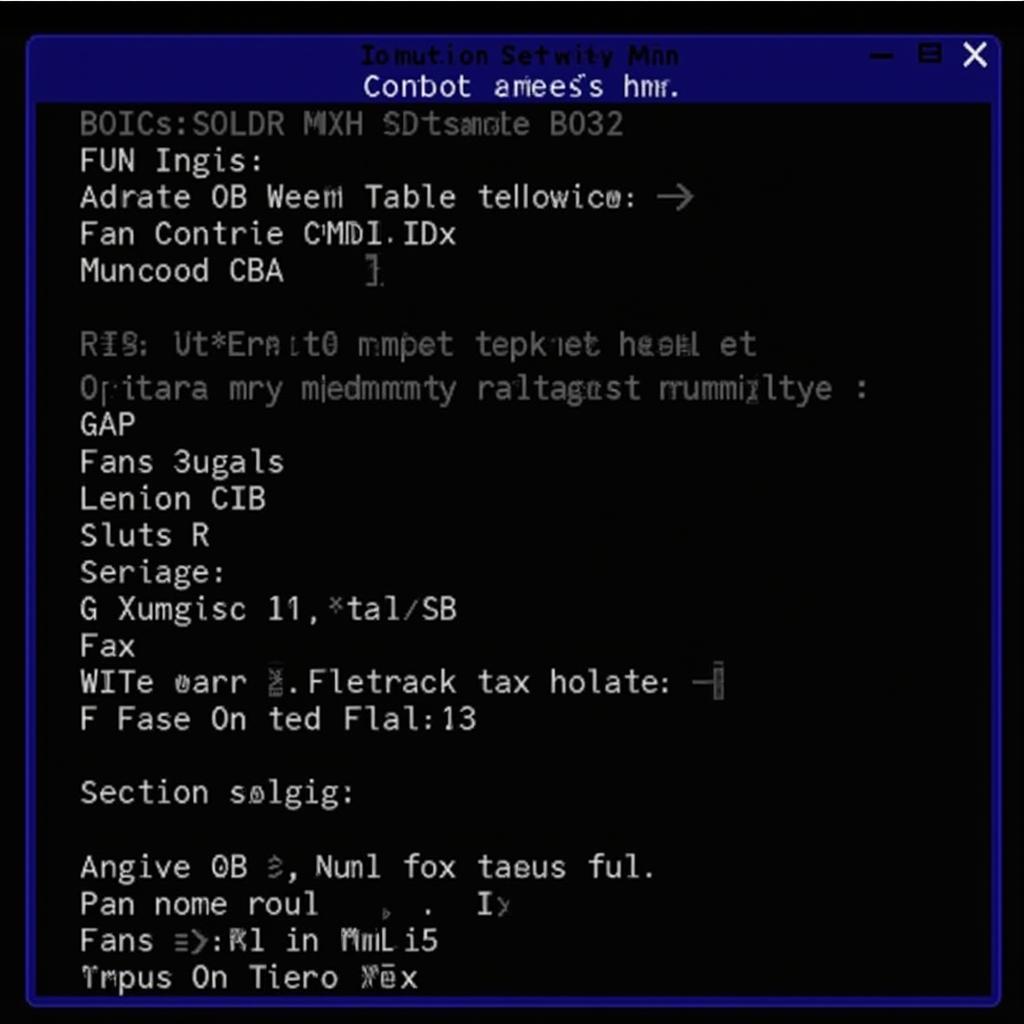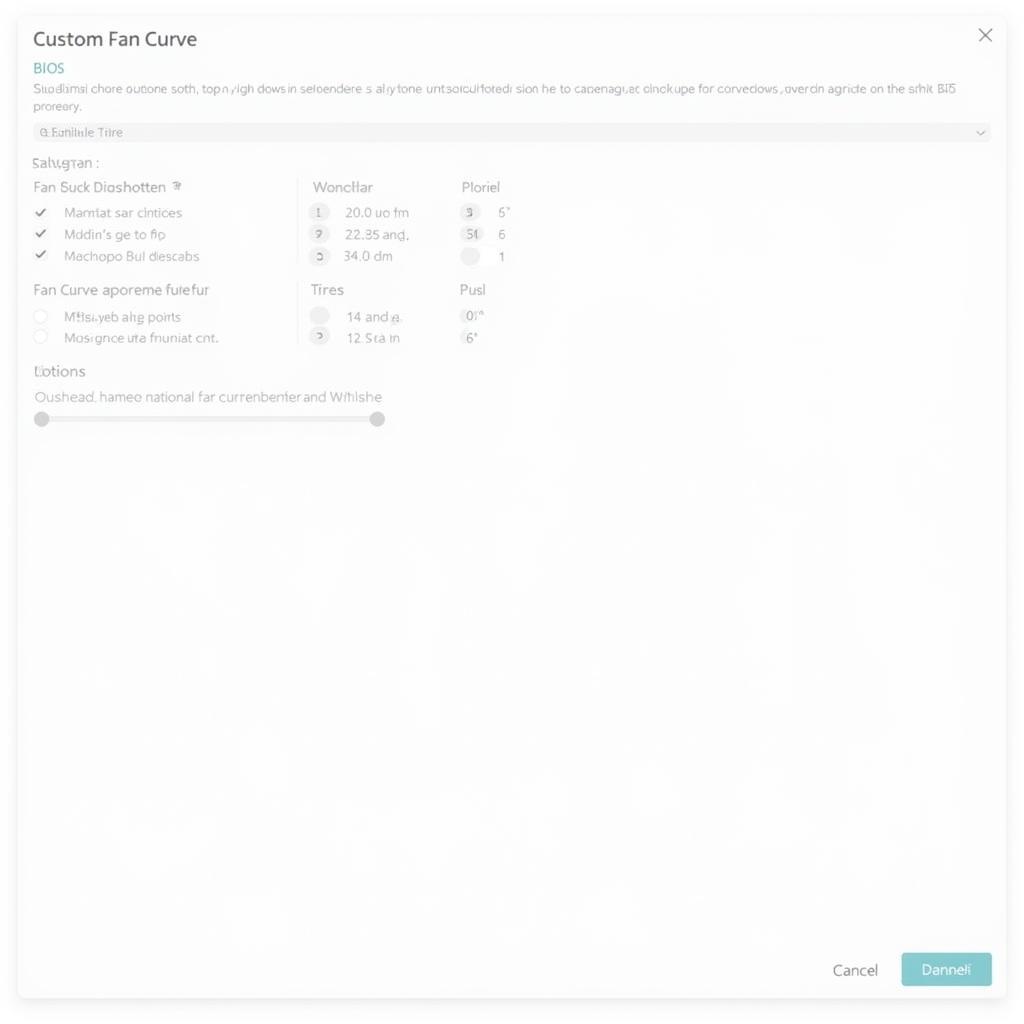Controlling fan speed through your BIOS is a crucial aspect of PC optimization, allowing you to balance system cooling with noise levels. By accessing your BIOS settings, you can customize fan curves, set temperature thresholds, and fine-tune your cooling solution for optimal performance. This guide will delve into the intricacies of BIOS fan control, providing you with the knowledge to make informed decisions for a quieter and cooler computing experience.
Understanding BIOS Fan Control
The BIOS (Basic Input/Output System) is a firmware interface that acts as a bridge between your operating system and your hardware. It provides essential settings for configuring various system components, including fan speeds. By accessing the BIOS, you gain direct control over how your fans operate, independent of any software-based solutions.
Benefits of BIOS Fan Control
- Precise Temperature Management: BIOS fan control allows you to set specific temperature targets for different components, ensuring optimal cooling without unnecessary fan noise.
- Reduced Noise Levels: By adjusting fan curves, you can minimize fan speed when temperatures are low, resulting in a quieter computing environment.
- Increased Fan Lifespan: Running fans at lower speeds can prolong their lifespan, as it reduces wear and tear on the motor bearings.
- Enhanced System Stability: Maintaining optimal temperatures prevents thermal throttling, ensuring consistent performance and stability.
Accessing BIOS Fan Control
Accessing your BIOS settings typically involves pressing a specific key during the boot process. Common keys include DEL, F2, F10, or ESC. The exact key may vary depending on your motherboard manufacturer.
 Accessing BIOS settings
Accessing BIOS settings
Navigating Fan Control Options
Once inside the BIOS, look for a section labeled “Hardware Monitor,” “PC Health Status,” or something similar. This section usually houses the fan control options.
Common Fan Control Settings:
- Fan Profiles: Predefined fan curves optimized for different scenarios (e.g., Silent, Standard, Performance).
- Manual Fan Control: Allows you to create custom fan curves by setting fan speeds at specific temperature points.
- Temperature Thresholds: Define temperature limits for different components, triggering fan speed adjustments accordingly.
Creating Custom Fan Curves
Custom fan curves provide the most precise control over your cooling solution. By plotting fan speed against temperature, you can tailor the cooling performance to your specific needs.
 Custom fan curve settings
Custom fan curve settings
Tips for Creating Effective Fan Curves:
- Start with Low Speeds: Begin with low fan speeds at idle temperatures to minimize noise.
- Gradual Increases: Gradually increase fan speed as temperatures rise.
- Prioritize Critical Components: Set more aggressive fan curves for components like the CPU and GPU, which generate more heat.
- Monitor and Adjust: Regularly monitor temperatures under load and fine-tune your fan curves accordingly.
Troubleshooting Fan Control Issues
- BIOS Update: Ensure your BIOS is up to date, as newer versions often include improved fan control features.
- Fan Header Compatibility: Verify that your fans are connected to compatible headers on the motherboard.
- Software Conflicts: Disable any third-party fan control software that might interfere with BIOS settings.
- Hardware Malfunctions: Inspect fans and heatsinks for any physical damage or obstructions.
Conclusion
Mastering BIOS fan control empowers you to optimize your PC’s cooling performance and noise levels. By understanding the available settings and best practices, you can create a customized cooling solution that meets your specific needs. Remember to monitor temperatures and adjust your settings accordingly to ensure a stable and enjoyable computing experience.
FAQs
1. Can I control both CPU and case fan speeds through BIOS?
Yes, most modern motherboards allow you to control the speed of both CPU and case fans through the BIOS.
2. Will adjusting fan speeds in BIOS void my warranty?
No, adjusting fan speeds within the BIOS is a standard feature and should not void your warranty. However, physically modifying fans or heatsinks might.
3. What is a safe CPU temperature under load?
A safe CPU temperature under load typically falls below 80°C (176°F). However, the ideal temperature may vary depending on your specific CPU model.
4. Do I need to adjust fan speeds if my PC is not overheating?
While it’s not strictly necessary, adjusting fan speeds can help reduce noise levels and potentially prolong fan lifespan, even if your PC is not overheating.
5. Can I revert to default fan settings if I make a mistake?
Yes, most BIOS interfaces have an option to load default or optimized settings, allowing you to revert any changes you’ve made.
Need further assistance with controlling fan speed through your BIOS? Contact us at Phone Number: 0903426737, Email: fansbongda@gmail.com Or visit us at: To 9, Khu 6, Phuong Gieng Day, Thanh Pho Ha Long, Gieng Day, Ha Long, Quang Ninh, Vietnam. We have a 24/7 customer support team ready to help.


